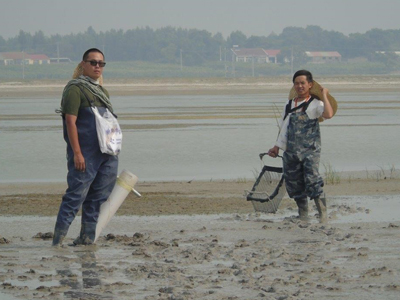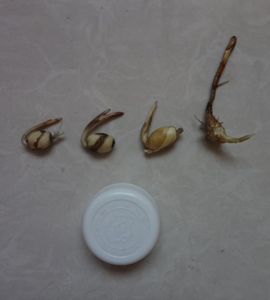 Many people are surprised to learn that one of the largest deserts in the world (Keerqin, or Horqin, Desert) is located in the upper reaches of the Liao River of northeast China. Among its well-known moving sand dunes are numerous small, shallow lakes that provide safe places for migratory cranes and waterbirds.
Many people are surprised to learn that one of the largest deserts in the world (Keerqin, or Horqin, Desert) is located in the upper reaches of the Liao River of northeast China. Among its well-known moving sand dunes are numerous small, shallow lakes that provide safe places for migratory cranes and waterbirds.
I have been searching for cranes in the desert for two years. This summer, our field assistants, Liu Tao and Yue Fusheng, helped me by completing an aquatic plant sampling in 20 lakes where we previously had sighted cranes or waterbirds. One of our focus aquatic plant species is Potamogeton pectinatus (thanks to Jeb Barzen, International Crane Foundation Research Associate, for help with the identification). To our surprise, some of the plant’s “beans” (tubers) are much bigger than we found before. I put some of them on the floor to take photos (using a bottle cap for size comparison):
 Yue Fusheng asked if the “beans” are tasty.
Yue Fusheng asked if the “beans” are tasty.
I said: “I don’t know. You can try it.”
He said, “I would not do that. The water (in the lake) is filthy!”
I said, “I washed them already.”
As soon as he heard that, he picked up a bean from the floor and put it into his mouth. He told me, “It is tasty!”
I have to confess, I could not help my curiosity, so I put one into my mouth immediately, too. The cranes are smart, they pick delicious food!
 Story submitted by Dr. Su Lying, East Asia Flyways Program Leader for the International Crane Foundation based in China. Click here to learn more about our work in East Asia.
Story submitted by Dr. Su Lying, East Asia Flyways Program Leader for the International Crane Foundation based in China. Click here to learn more about our work in East Asia.
